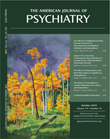This interesting book is a collection of brief essays centered around 10 clinical vignettes. The authors are faculty members from the Weill Cornell Medical College and the Columbia University College of Physicians and Surgeons. Contributions include gems from giants in the field such as Ethel Person, discussing love; Otto Kernberg, on borderline personality organization; Arnold Cooper, on the self-defeating patient; William Breitbart, on meaning-centered therapy with terminally ill patients; George Alexopoulos, on geriatric depression; and Bruce McEwen, on the neurobiology of stress. The star-studded list of contributors also includes Elizabeth Auchincloss, Susan Vaughan, Martha Bruce, Robert Michels, and Paul Appelbaum, among many others. The editor is John Barnhill, an associate professor at the Weill Cornell Medical College and chief of the Consultation-Liaison service at the New York-Presbyterian Hospital/Weill Cornell Medical Center, who also contributed a number of topics, such as delirium, capacity in geriatric patients, managing multiple patients in the emergency room, hospital psychodynamics, and countertransference.
Each chapter is based on the presentation of an intriguing clinical scenario. In some situations, a follow-up evaluation is provided. The vignettes are very well written, allowing the reader to grasp critical aspects of the case while remaining realistic about the amount of information that can be gathered in the brevity of an initial outpatient intake, emergency room interview, or bedside consultation. The discussants address different angles of the case, according to their expertise and interests. This makes for a very rich, intricately woven collage of views, each author contributing greatly to a sophisticated understanding of the patient. The reader will be impressed with the depth achieved by the expert dissection of each clinical scenario into components. In a seemingly effortless manner, every essay addresses an individual feature of the case, starting with interview pointers, ethical dilemmas in the assessment, involvement of family members, moving on to the neurobiological underpinning of psychiatric disorders, pharmacology, and complex psychotherapeutic management. By the end of each chapter, a very thorough bio-psycho-social-cultural formulation emerges, based on the multilayered essays. For example, the psychological impact of dislocation and particularities of treating Dominican patients are juxtaposed to adolescent bereavement and suicidal behavior.
This book will be of great interest to all mental health clinicians, either in training or already in practice, since it contains current views of neurobiology as well as of varied psychotherapeutic techniques. In particular, psychiatrists preparing for the Boards who still have to take the oral examination should read it. Each chapter closely replicates the examination format, with a vignette followed by targeted questions on different aspects of the case, from the psychodynamic formulation to the appropriate workup and to the clinical management and prognosis. The breadth of psychopathology covered is a plus, featuring anxiety, mood disturbances, psychosis, delirium, substance misuse, somatoform disorders, and personality disorders. Another great strength is the array of clinical settings in which the cases are placed as well as the age range of the patients depicted. Whether working with children, adolescents, young adults, or the elderly, every clinician will find something new to learn from this book.
A welcome addition is the last vignette, that of a female Asian American medical student presenting with somato-form symptoms and obsessive-compulsive personality traits. Departing from the setting of outpatient clinics, emergency departments, or hospitals, this scenario gets closer to home, into the realm of student health services. The case brings to attention the correlation between high levels of stress coupled with fear of academic failure, which may contribute to new onset or recurrence of anxiety or depression in medical students. After this book's
tour de force, the fine educators of Cornell and Columbia leave us with the parting message: “Physician, heal thyself.” Stressors encountered during the medical education years are becoming better known, contributing to higher rates of anxiety and depression in students, when compared with their age-matched peers (
1). No medical curriculum is complete without addressing the intense emotional commitment of physicians and the need to constantly monitor ourselves and our peers for signs of burnout and psychiatric illness. Strategies such as mindfulness meditation, briefly mentioned in the last chapter, should be taught in every academic institution.
In conclusion, this is a masterful compilation of essays exploring multiple facets of the psychiatric practice from an illustrious group of authors. Whether still in training or looking for updates, mental health specialists will find this book useful and enjoyable.

